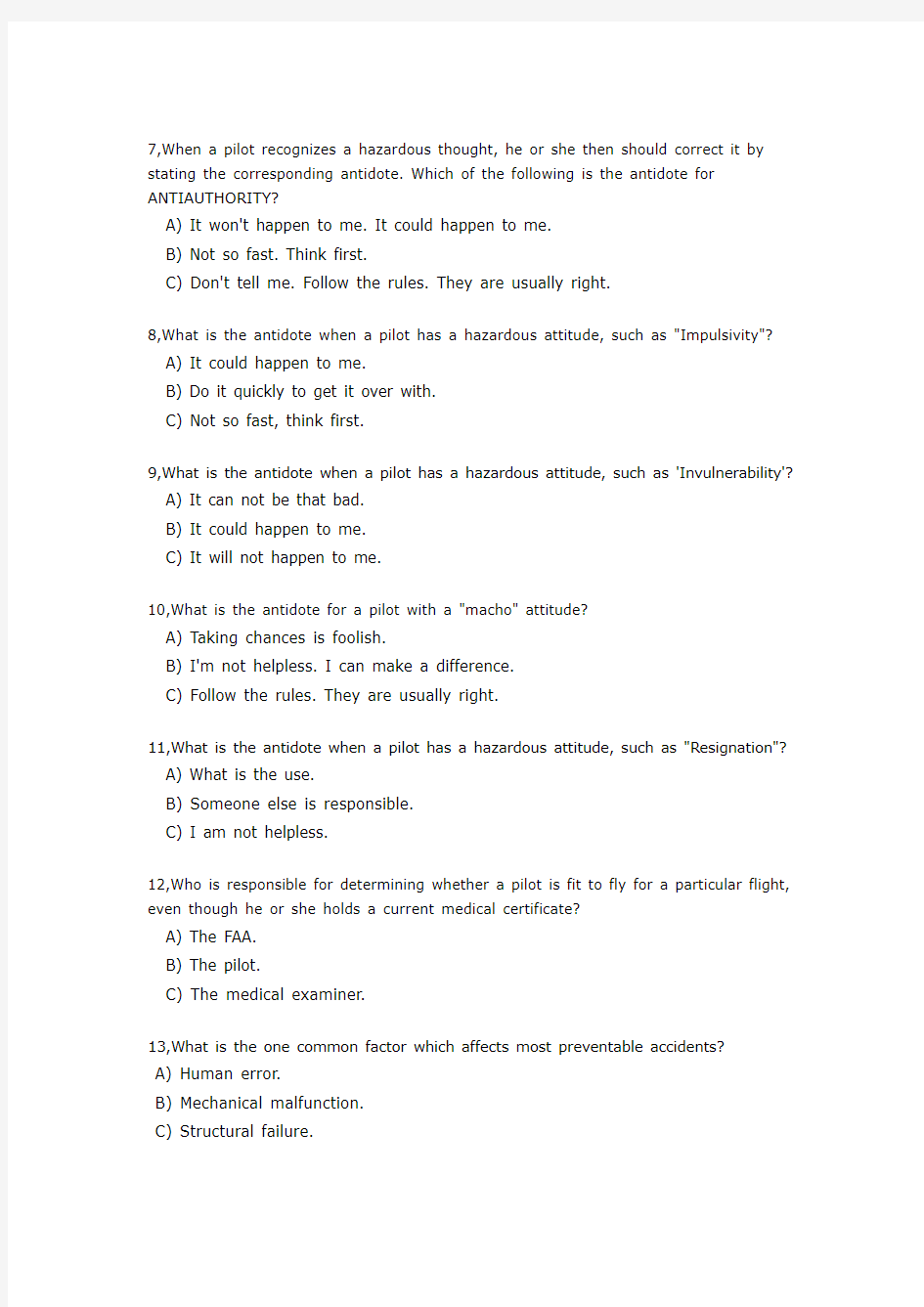ADM


Name:Class:Grade:
TEST 1 ADM
1,Risk management, as part of the Aeronautical Decision Making (ADM) process, relies on which features to reduce the risks associated with each flight?
A) The mental process of analyzing all information in a particular situation and making a timely decision on what action to take.
B) Situational awareness, proble-m recognition, and good judgment.
C) Application of stress management and risk element procedures.
2,What is it often called when a pilot pushes his or her capabilities and the aircraft's limits by trying to maintain visual contact with the terrain in low visibility and ceiling?
A) Peer pressure.
B) Scud running.
C) Mind set.
3,What often leads to spatial disorientation or collision with ground/obstacles when flying under Visual Flight Rules (VFR)?
A) Continual flight into instrument conditions.
B) Getting behind the aircraft.
C) Duck-under syndrome.
4,What is one of the neglected items when a pilot relies on short and long term memory for repetitive tasks?
A) Flying outside the envelope.
B) Checklists.
C) Situation awareness.
5,Hazardous attitudes occur to every pilot to some degree at some time. What are some of these hazardous attitudes?
A) Antiauthority, impulsivity, macho, resignation, and invulnerability.
B) Poor risk management and lack of stress management.
C) Poor situational awareness, snap judgments, and lack of a decision making process.
6,What is the first step in neutralizing a hazardous attitude in the ADM process?
A) Dealing with improper judgment.
B) Recognition of hazardous thoughts.
C) Recognition of invulnerability in the situation.
7,When a pilot recognizes a hazardous thought, he or she then should correct it by stating the corresponding antidote. Which of the following is the antidote for ANTIAUTHORITY?
A) It won't happen to me. It could happen to me.
B) Not so fast. Think first.
C) Don't tell me. Follow the rules. They are usually right.
8,What is the antidote when a pilot has a hazardous attitude, such as "Impulsivity"?
A) It could happen to me.
B) Do it quickly to get it over with.
C) Not so fast, think first.
9,What is the antidote when a pilot has a hazardous attitude, such as 'Invulnerability'?
A) It can not be that bad.
B) It could happen to me.
C) It will not happen to me.
10,What is the antidote for a pilot with a "macho" attitude?
A) Taking chances is foolish.
B) I'm not helpless. I can make a difference.
C) Follow the rules. They are usually right.
11,What is the antidote when a pilot has a hazardous attitude, such as "Resignation"?
A) What is the use.
B) Someone else is responsible.
C) I am not helpless.
12,Who is responsible for determining whether a pilot is fit to fly for a particular flight, even though he or she holds a current medical certificate?
A) The FAA.
B) The pilot.
C) The medical examiner.
13,What is the one common factor which affects most preventable accidents?
A) Human error.
B) Mechanical malfunction.
C) Structural failure.
